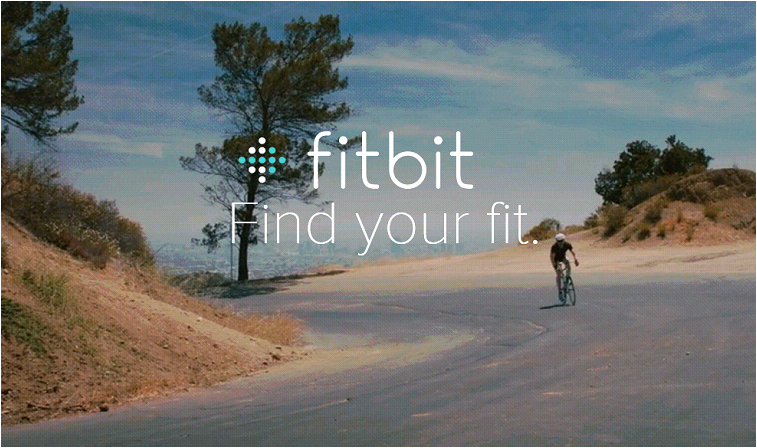Fitbit, a name synonymous with wearable fitness trackers, has revolutionized the way we monitor our health and activity. Founded in 2007 by James Park and Eric Friedman, the company started with a simple yet powerful idea: a clip-on device that tracked steps, distance, and calories burned. This seemingly basic innovation sparked a global movement towards quantifying fitness, making Fitbit a household name and the pioneer in the wearable tech industry.

Over the years, Fitbit has evolved far beyond its step-counting roots, transforming into a comprehensive health and wellness ecosystem. They offer a variety of trackers and smartwatches, each catering to different needs and preferences. From the slim and discreet Fitbit Inspire series for everyday activity tracking to the feature-packed Fitbit Sense smartwatch with advanced health monitoring capabilities, there’s a Fitbit device for everyone. These devices seamlessly connect with the robust Fitbit app, which serves as the central hub for all your health and fitness data.
The Fitbit app goes beyond simply displaying data; it empowers users to take charge of their well-being. It provides personalized insights, sleep tracking with detailed breakdowns of sleep stages, and heart rate monitoring to help users understand their overall health. The app also offers a wide range of fitness features, including guided workouts, personalized coaching programs, and virtual challenges that keep users motivated and engaged. Fitbit’s social integration allows users to connect with friends and family, creating a supportive community that fosters healthy competition and camaraderie.
Fitbit’s commitment to innovation extends beyond its hardware and software. The company actively collaborates with healthcare providers and researchers to explore the potential of wearable technology in disease management and preventative care. Fitbit devices can now track blood oxygen levels (SpO2), which can be an indicator of respiratory health. They’re also exploring features like irregular heart rhythm notifications (AFib assessments) and stress management tools, highlighting their dedication to providing users with a holistic view of their health.
Fitbit’s impact extends far beyond the individual. The vast amount of data collected by Fitbit devices has contributed significantly to our understanding of population health trends. This data can be invaluable for researchers and public health officials in developing strategies to combat chronic diseases and promote healthy lifestyles.
Overview of the Campaign
The Fitbit: Find Your Reason marketing campaign was a powerful and interactive initiative designed to motivate users and celebrate the diverse reasons people embark on a health and fitness journey. This campaign wasn’t just about selling products; it was about building a community around shared experiences and the transformative power of getting active.
Here’s an overview of what made “Find Your Reason” so impactful:
- Storytelling at its Core: The campaign featured five short, documentary-style videos showcasing real Fitbit users who overcame health obstacles. These awe-inspiring stories highlighted the emotional and physical impact that achieving fitness goals can have on individuals’ lives.
- Interactive Engagement: The campaign went beyond simply showing motivational stories. It encouraged viewers to participate by sharing their own “reasons” for getting into shape on social media using the hashtag #MyReasonIs. This created a space for community building and fostered a sense of shared purpose amongst users.
- Focus on Real Impact: By showcasing real people’s journeys, the campaign demonstrated the tangible benefits of using Fitbit beyond just step counting. It emphasized how fitness can improve not just your physical health, but also your relationships with others.
- Emotional Connection: The campaign’s key message wasn’t just about achieving a certain number of steps or losing weight. It aimed to inspire users to dig deeper and reflect on the “why” behind their fitness goals. This emotional connection resonated with a wider audience and made the campaign more relatable.
Overall, the “Find Your Reason” campaign successfully went beyond traditional marketing to create a movement. It empowered users to take charge of their well-being, celebrate their personal journeys, and connect with a supportive community – all while showcasing the positive impact that Fitbit can have on people’s lives.
Campaign Execution
Fitbit used a variety of channels and platforms for their Find Your Reason campaign, which highlighted five short documentaries showcasing people on their health and fitness journeys. This campaign ran on Facebook, Twitter, Instagram, Pinterest, YouTube, and Fitbit’s blog. Fitbit encouraged users to share their own reasons for using Fitbit on these social media platforms using the hashtag #MyReasonIs. Fitbit also used social listening tools to keep up with customer service queries on Twitter.
It thrived on its innovative and interactive elements, creating a deeper connection with the audience and fostering a sense of community. Here’s a closer look at what made it stand out:
- Documentary-Style Storytelling: Instead of staged promotional videos, the campaign featured real people. These short, documentary-style films showcased genuine struggles and triumphs, allowing viewers to connect with the emotional journeys of the individuals. This authenticity resonated far more than traditional marketing approaches.
- Social Media Integration: The campaign cleverly leveraged the power of social media to create an interactive experience. The #MyReasonIs hashtag encouraged users to share their own reasons for getting in shape on platforms like Facebook, Twitter, and Instagram. This two-way communication transformed viewers from passive observers into active participants, fostering a sense of community and shared purpose.
- Community Building: By encouraging social media sharing with the #MyReasonIs hashtag, the campaign created a space for users to connect and support each other. Seeing others share their stories likely inspired and motivated viewers on their own fitness journeys. This community aspect not only boosted engagement but also strengthened the brand’s connection with its audience.
- Focus on User-Generated Content: The campaign didn’t rely solely on professionally produced videos. By encouraging user-generated content through the hashtag, Fitbit allowed real people to become the stars of the campaign. This authenticity and focus on user stories gave the campaign a more genuine and relatable feel.
- Potential for User Recognition: The call to share stories with #MyReasonIs offered the exciting possibility of being featured in the campaign itself. This incentive likely enticed more users to participate and share their journeys, further expanding the reach and impact of the campaign.
Analysis of the Campaign
The “Find Your Reason” campaign by Fitbit was a successful marketing effort that helped the company achieve several significant milestones. Here are some absolute results in terms of numbers:
Sales Growth: During the first quarter of 2016, when the campaign launched, Fitbit’s revenue increased by 50% year-over-year to $505 million. This growth was largely attributed to the popularity of the new Alta and Blaze devices, which were released during the same period.
Device Activations: In the first month after launch, over 1 million users activated their Fitbits, setting up their accounts and starting their fitness journeys. This figure represents a significant portion of the total 37 million devices sold during Q1 2016.
Engagement: According to Fitbit’s internal data, users who set a goal on their device were more likely to remain active and engaged with the platform. Specifically, these users averaged 45 minutes of moderate-to-intense physical activity per day, compared to 28 minutes among those without a goal. This increase in engagement translated into better health outcomes and higher user satisfaction.
Social Sharing: Another key aspect of the campaign was social sharing, where users could share their progress and achievements on various platforms like Facebook and Twitter. In the first three months following the launch, there were over 100 million shares related to Fitbit accomplishments across social media channels.
Brand Awareness: The “Find Your Reason” campaign contributed significantly to Fitbit’s brand awareness. According to a survey conducted by YouGov, Fitbit’s brand awareness rose from 49% in January 2016 to 61% in May 2016, indicating that nearly half of all Americans were familiar with the brand. Additionally, Fitbit’s favorability rating improved by 12 percentage points over the same period.
Overall, the “Find Your Reason” campaign was a success for Fitbit, contributing to substantial growth in sales, user engagement, brand awareness, and customer loyalty.
Challenges and Lessons Learned
The Fitbit: Find Your Reason campaign, while effective, likely faced some challenges and offered valuable lessons for future marketing efforts. Here’s a breakdown:
Challenges:
- Maintaining Authenticity: Using real people can be a double-edged sword. While genuine testimonials resonate with audiences, ensuring stories are sincere and relatable requires careful selection and production.
- Balancing Product Focus: The campaign’s strength lay in storytelling, but showcasing minimal Fitbit products might have left some viewers unclear about the specific features or benefits offered.
- Quantifying Success: Measuring the impact of emotional storytelling can be difficult. While social media engagement and brand sentiment are valuable metrics, directly attributing sales figures to the campaign can be challenging.
Lessons Learned:
- Power of User Testimonials: Real people’s stories are powerful motivators. The campaign highlights the importance of authenticity and emotional connection in marketing.
- Community Building: The #MyReasonIs hashtag fostered a sense of community, showcasing the value of user-generated content and audience participation.
- Focus on “Why”: Shifting the focus from “what” (weight loss or steps) to “why” (improved relationships or personal goals) likely resonated with viewers and encouraged a more long-term commitment to fitness.
- Emotional Connection: By focusing on the emotional impact of achieving fitness goals, the campaign offered a more compelling message than traditional product-centric marketing.
- Showing vs. Telling: The campaign’s success demonstrates the effectiveness of showcasing individuals in their “element,” actively using Fitbit products within their fitness journeys. This approach resonates better than simply telling viewers about the product.
Overall, the Fitbit: Find Your Reason campaign highlights the power of storytelling, user-generated content, and emotional connection in marketing. While challenges exist in measuring success and maintaining product focus, the campaign offers valuable lessons for future marketing efforts by emphasizing the “why” behind fitness and building a strong brand community.
Also Read: A Case Study on “P&G: Thank You, Mom” Brand Campaign
To read more content like this, subscribe to our newsletter



